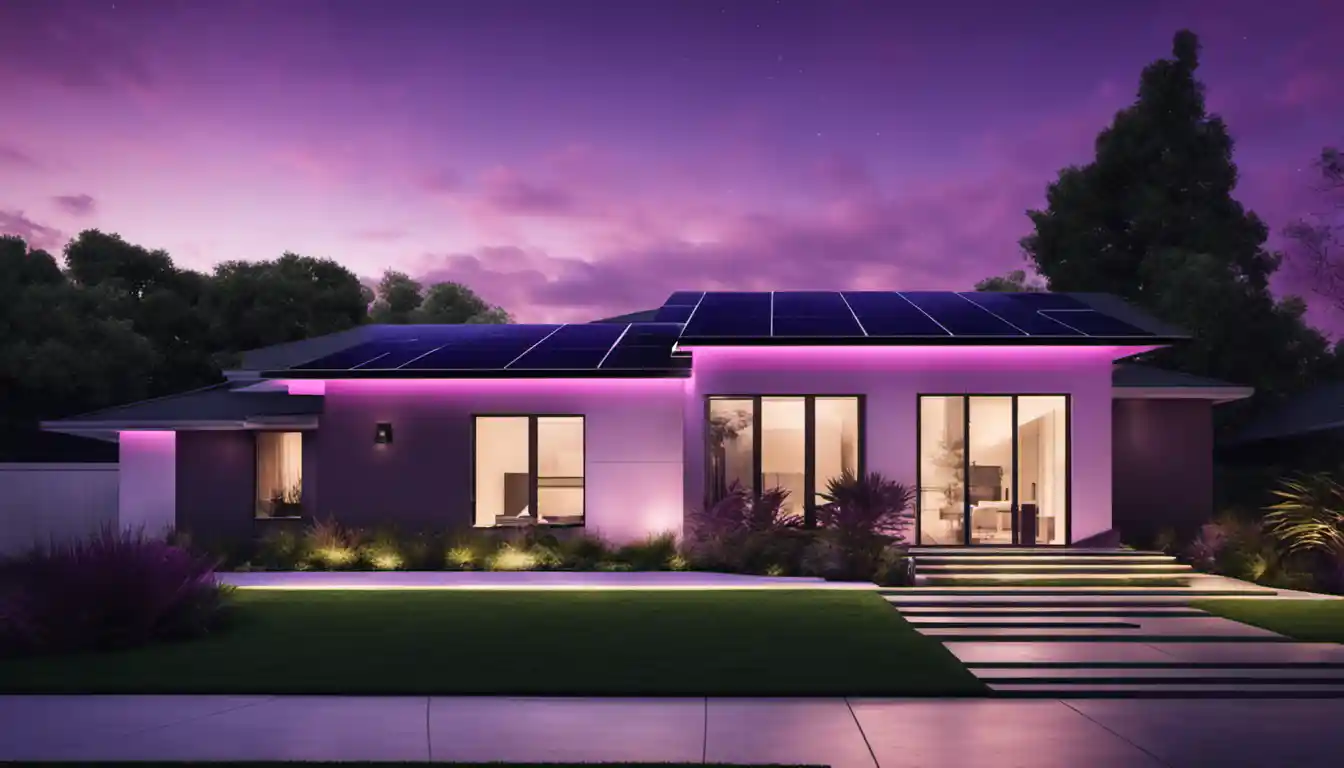The Basics: Can You Charge Your Tesla with Solar?
Yes, you can charge a Tesla car with solar panels. Tesla itself sells solar panels, powerwalls and solar roofs for home use that can be used to charge your Tesla vehicle. It’s a cost-effective and sustainable manner to power your electric car.
How Charging a Tesla with Solar Works
The process begins with solar panels fixed on your roof that capture sunlight and convert it into electricity. This electricity is then routed through an inverter to change it from direct current (DC) to alternating current (AC), which your home—and your Tesla—can use. Any excess power can be stored in a battery, like the Tesla Powerwall, or exported back into the grid.
Traditional vs. Solar Charging
Charging your Tesla traditionally is mainly about plugging it into the electricity grid. However, this electricity is often generated through non-renewable sources. On the other hand, charging a Tesla with solar panels taps into a renewable source—sunlight—which is both eco-friendly and cost-effective in the long run.
The Essentials: Energy Required to Charge a Tesla
The Tesla’s Efficiency Rating
A Tesla Model S needs about 20 kWh of electricity based on the EPA’s estimate of 3.3 miles per kWh to travel approximately 66 miles per day. Of course, mileage varies depending on factors like your driving habits and the model of your Tesla.
Typical Operation of Tesla Charging
On average, you have to let a Tesla Model S charge for about 12 hours to reach full capacity from a home charger. But, if you’re wondering, “how long to charge a Tesla with solar panels?”—the charging speed would still largely depend on external factors like the weather and size of your solar system.
Cost Considerations: Charging a Tesla with Solar
Initial Costs

Purchasing a Solar Energy System
The upfront cost of installing a solar energy system depends on how large a system you need. A good quality 5 kW system in the US can cost anywhere between $10,000 and $13,000 after federal tax credits.
Investing in an EV Charger
You can plug your Tesla into a regular 110-volt outlet with the included adapter. But for faster charging, you might want to invest in a home charging setup. Tesla’s Wall Connector will set you back around $500 before installation costs.
Running Costs
Running costs, after the initial investment, will be significantly less. The primary cost will be any maintenance or repairs needed for your solar system. And if you generate more electricity than you need, you may even earn money from selling the excess back to the grid.
Cost Per kWh for Charging a Tesla with Solar Panels
The average cost per kWh of solar panels differs by area but will invariably be much cheaper than buying electricity from the grid in the long run. Plus, there’s the additional bonus of becoming independent of fluctuating energy prices.
Comparing the Costs: Solar Panels Versus Grid Electricity
Cost to Charge a Tesla Model 3 with Solar Panels
Assuming a usage of 30 kWh per 100 miles driven and the US national average solar panel cost of 13 cents per kWh, charging a Model 3 would cost around $3.90 for a 300-mile range.
Cost to Charge a Tesla Model 3 on Grid
On the other hand, the average electricity cost per kWh in the US is around 13 cents. Hence, to fully charge a Model 3 on the grid costs around $9.60 for the same range.
Additional Bonus: Pairing the Tesla Powerwall with Solar and a Tesla

Why Consider Tesla Powerwall?
Let’s imagine a scenario where it’s cloudy for days, and your panels aren’t producing enough electricity. Enter Tesla Powerwall, a battery storage system that stores excess power generated on sunny days for use during overcast days, nights, or powercuts.
Combining Solar, Tesla, and Powerwall
When you combine a Tesla, Solar Panels and a Powerwall, you’re in essence creating a mini power grid right in your home. Your car, your home—it all runs from the clean energy produced by your own solar panels. Not only do you slash your energy bill, but you’re also making a substantial contribution to reducing your carbon footprint.
FAQ: Common Queries About Charging a Tesla with Solar
Is it practical to use solar panels for charging a Tesla?
Absolutely! It not only decreases your dependency on traditional electricity sources but also increases the lifespan of your solar panels by making use of the power they produce.
What is the expense associated with solar Tesla charging?
The upfront cost might seem high, but considering the long-term benefits and cost savings, it makes a compelling financial case.
Can I integrate a Powerwall into the system?
Sure! A Powerwall is an excellent addition to your system because it ensures that even on those days when the sun isn’t shining, your Tesla will never run out of juice.
Getting Started: Charging Your Tesla with Solar Today

Necessary Steps to Take
First, evaluate your home’s solar potential. Then, select the right-sized solar system and get it professionally installed. Finally, plug in your Tesla to your home charging setup and enjoy free energy for your rides.
Recognizing Potential Savings and Sustainability
Starting to charge your Tesla with a home solar system can entail serious savings in the long-term—while also helping preserve the planet for future generations.
Moving Towards a Fully Electric Lifestyle
With a solar-powered Tesla, you’re not only embracing an electric vehicle; you’re partaking in a full-blown electric lifestyle that’s sustainable and beneficial, both economically and environmentally.
The Bigger Picture: Benefits of Charging Your Tesla with Solar Panels
Effect on the Environment
Charging a Tesla with solar panels substantially reduces your carbon emissions and helps fight climate change. Plus, you’re making the most out of renewable energy, thus contributing to a sustainable future.
Contributions towards Renewable Energy Transition
By exploiting solar power, you’re supporting the global transition from fossil fuels to renewable energy—a critical step in combating climate change.
Potential for Future Cost Savings
With solar panels and a Powerwall, you’ve effectively insulated yourself from rising electricity costs. The future savings can be immense.
So, that’s the full scoop on “can you charge a Tesla with solar panels”. If you’re keen to learn more about harnessing solar power for your vehicle, check out our [/solar-powered-vehicles](exploration on Getting Started with Solar Powered Vehicles). Solar power truly is a bright solution for powering your Tesla—making driving not just more sustainable, but also more economical. So take for a spin and enjoy the ride!



